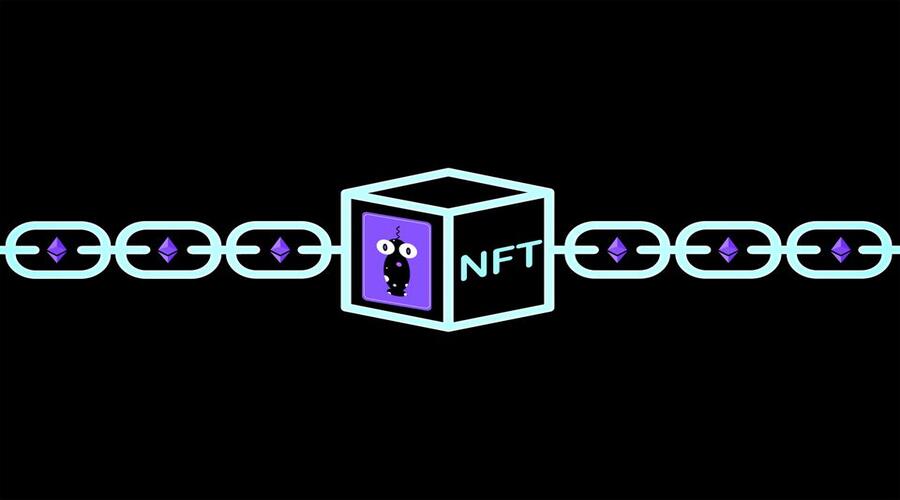

Blockchain technology has gained widespread popularity in recent years due to its decentralized and transparent nature. One of the latest applications of blockchain technology is Non-Fungible Tokens (NFTs), which have revolutionized the way we think about digital ownership and provenance. In this article, we will explore the blockchain technology behind NFTs and how it enables the unique properties of these tokens.
What is Blockchain Technology?
At its core, blockchain technology is a decentralized, digital ledger that records transactions in a secure and transparent way. Each block in the blockchain contains a set of transactions that have been verified by a network of computers, known as nodes. Once a block is added to the blockchain, it cannot be altered or deleted, creating a permanent and transparent record of all transactions.
The blockchain is maintained by a network of nodes, which work together to validate transactions and maintain the integrity of the blockchain. This decentralized nature of the blockchain means that there is no central authority controlling the network, making it resistant to censorship and fraud.
What are Non-Fungible Tokens?
Non-Fungible Tokens, or NFTs, are unique digital assets that are stored on a blockchain network. Unlike traditional cryptocurrencies, which are interchangeable with each other, NFTs are unique and cannot be replicated. Each NFT has a distinct identifier, known as a token ID, which is stored on the blockchain network.
NFTs can represent anything from digital art and music to in-game items and collectibles. One of the key benefits of NFTs is that they enable digital ownership and provenance. By storing an NFT on a blockchain network, the ownership and transaction history of the asset can be tracked and verified in a transparent way.
How Does Blockchain Technology Enable NFTs?
Blockchain technology is essential for enabling NFTs, as it provides the decentralized and transparent infrastructure needed to store and verify the ownership of these unique assets. When an NFT is created, it is minted on a blockchain network, such as Ethereum or Binance Smart Chain. The NFT is then assigned a unique token ID, which is recorded on the blockchain.
Once an NFT is minted, it can be transferred or sold to another party in a transparent and secure way. Each transaction is recorded on the blockchain, creating a permanent record of the ownership and transaction history of the NFT.
Smart Contracts and NFTs
Smart contracts are a key component of the blockchain technology behind NFTs. Smart contracts are self-executing contracts that are stored on a blockchain network. They are used to automate the process of transferring NFTs and ensuring that ownership is transferred securely and transparently.
When an NFT is transferred, a smart contract is used to validate the transaction and transfer ownership of the asset. The smart contract contains the rules and conditions of the transfer, ensuring that the transaction is secure and transparent.
The Benefits of NFTs and Blockchain Technology
NFTs and blockchain technology offer a range of benefits, including digital ownership and provenance, transparency, and security. By storing assets on a blockchain network, NFTs enable the unique properties of digital ownership and provenance, which were previously impossible with traditional digital assets.
The transparency and security of blockchain technology also make it an ideal solution for storing and verifying the ownership and transaction history of assets. By using smart contracts, the transfer of ownership can be automated and validated in a secure and transparent way, reducing the risk of fraud and disputes.
In addition to the benefits mentioned above, NFTs and blockchain technology have other advantages that make them an attractive solution for a variety of use cases.
Immutability
One of the key features of blockchain technology is immutability. Once a transaction is recorded on the blockchain, it cannot be altered or deleted. This means that the ownership and transaction history of an NFT are permanent and cannot be tampered with.
This immutability is essential for establishing the provenance and authenticity of an NFT. It ensures that the transaction history is transparent and cannot be altered, which is important for verifying the value and authenticity of a digital asset.
Accessibility
NFTs and blockchain technology have also made it possible for more people to participate in the digital economy. By removing intermediaries and providing a transparent infrastructure for buying, selling, and trading digital assets, NFTs have made it easier for artists, musicians, and other creators to monetize their work and reach a global audience.
In addition, the low barriers to entry for creating and minting NFTs have made it possible for anyone to participate in the digital economy, regardless of their location or background.
Interoperability
Another advantage of NFTs and blockchain technology is interoperability. NFTs can be created and stored on a variety of blockchain networks, such as Ethereum, Binance Smart Chain, and Polygon. This interoperability means that NFTs can be transferred between different blockchain networks, creating a seamless and open ecosystem for digital assets.
This interoperability is essential for enabling the growth and adoption of NFTs, as it allows for a wider range of use cases and applications.
Limitations
Despite the many advantages of NFTs and blockchain technology, there are also some limitations to consider. One of the biggest limitations is the environmental impact of blockchain networks, which require significant amounts of energy to operate.
In addition, the volatility of the cryptocurrency market can also impact the value and liquidity of NFTs, making it important for investors to carefully consider the risks and potential rewards of investing in NFTs.
Conclusion
NFTs and blockchain technology have revolutionized the way we think about digital ownership and provenance. By providing a transparent and secure infrastructure for storing and verifying digital assets, NFTs enable a range of use cases and applications.
From digital art and music to in-game items and collectibles, NFTs offer a new way for creators to monetize their work and for investors to participate in the digital economy. With the continued growth and development of blockchain technology, the potential for NFTs is only beginning to be realized.


I have been writing about crypto for over two years. I have a vast amount of experience in the industry and my work has been featured on some of the biggest publications in the space.
